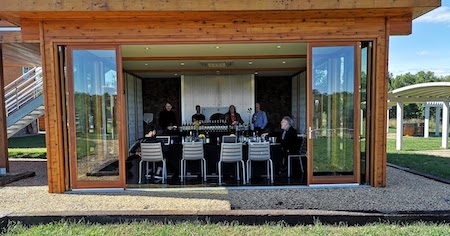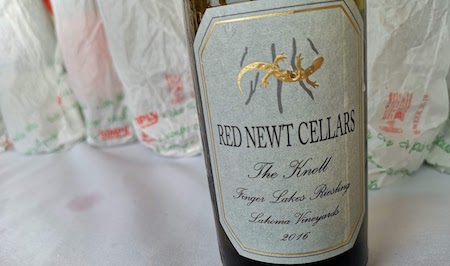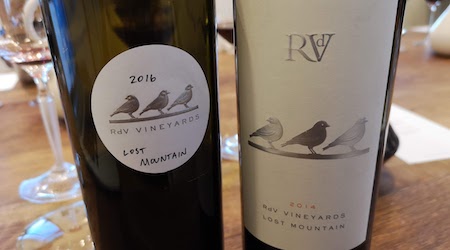American Wine Revolution
In cities and rural locations across America a wine revolution is under way. The little that has been written about it so far has focused upon individual states, which is why so far only a few insiders see the big picture. When the world thinks about American wine it’s firmly located on the West Coast, but the truth is that wine is produced in all the states of the Union. For example, Colorado may seem like an extremely unlikely place to make wine, but the state has 198 wineries and many outstanding quality wines exist!
Some older American readers will be unaware of this development, because years ago they tried local wines and rejected the entire category, because it was “weird juice” or even faulty. For younger drinkers right around Planet Wine the idea of American wine from places other than the states of California, Washington State and Oregon is entirely new – and exciting. It illustrates America’s pioneering spirit as well as the trend for authentic food and gastronomic experiences from heirloom vegetables to craft beer. American wine is unique and now part of the American psyche for food and wine.
This is why James, contributing editors Nick Stock and William Mcllhenny and myself got together in Virginia to taste more than 800 wines from some of the best wineries in the heartland of America. We focused on non-West Coast wineries and rated wines from 14 different states from Colorado to New York.

JamesSuckling.com team at Chrysalis Vineyards, in the forefront of the American Wine Revolution.
America is a huge country famously spanning the entire continent from sea to shinning sea, from the Atlantic Ocean to the Pacific Ocean. The distance is huge between, for example, the wine industry of Idaho’s Snake River Valley to that on the North Fork at the eastern tip of Long Island in New York State. We chose to taste everything at a single location because it enabled us to taste all the wines under ideal conditions (we had two tasting coordinators as well) and to compare wines of the same grape variety or style from different states. The tasting was at Barboursville Vineyards, close to arguably the historical epicenter of American wine, Thomas Jefferson’s beautiful farm, Monticello. It was America’s founding father’s dream that the states would produce great wines across the nation and it has finally become a reality.
The most important conclusion of our tasting is that dozens of outstanding wines are now available from just about every state and for every taste. And they deserve your attention.
Our top scoring dry white was the 2016 The Knoll, a rich and highly-structured dry Riesling from Red Newt on the east bank of Seneca Lake in the Finger Lakes/New York that we rated 96 points and we compare it to the legendary white of Alsace, Trimbach Clos Ste. Hune. The difference is that Clos Ste. Hune retails in the US for about $175 and The Knoll costs just $40 – and dare I say it, it’s American!
Our top red wines, the 2016 Lost Mountain from RdV in Delaplane, Virginia, which also rated 96. It is much more expensive at $150, however, this cabernet sauvignon-based blend has a stunning combination of concentration and fine-grained tannins. If you find some cult California cabernets a bit too heavy, then you should find Lost Mountain more than exciting. It has the fruit purity of Napa with the finesse and structure of Bordeaux.
Beyond these magical bottles, we found dozens of other outstanding whites, sparkling and red wines with outstanding quality and most sell for between $15 and $40 a bottle. Tasting the American wine revolution doesn’t have to cost a fortune.
The people behind these wines are perfect examples of the pioneers who are driving the American Wine Revolution. For instance, Red Newt was founded in 1998 by local winemaker Dave Whiting, but entered a new phase of development when he hired Kelby Russell as winemaker in late 2012. Russell studied social sciences at Harvard but decided that wine was way more exciting. Just 30 years old, his first experience of winemaking was as a harvest intern at Fox Run Vineyards in the Finger Lakes back in 2009.

Our best whites in the American Wine Revolution tasting of 880 samples was this riesling from New York’s Finger Lakes.
Red Newt owns no vines. The Knoll comes from a single block at Lahoma Vineyards on Seneca Lake planted in 2008. “The dedication of grape growers like Harlan and Kenny Fulkerson of Lahoma Vineyards is the foundation of everything we do at Red Newt. Whether from working harvests in Tasmania and the Barossa Valley in Australia or from visits to colleagues in Germany and Alsace, the joy for me is in connecting the winemaking ideas to meet the high standards we have for each vineyard site,” Russell says. That combination enabled him to develop a radically new style of dry Riesling in the Finger Lakes.
Rutger de Vink was a platoon commander in the Marines until 1996. “The Marine Corps was not a job for me but a way of life, and I wanted to find that feeling again,” he explained, “so in 2001 I worked the harvest at Linden Vineyards in Northern Virginia and I fell in love with working in the vineyard. After a three-year search I bought the land in Delaplane and started RdV in 2004.”
Although he was able to make substantial investment in the 6.5 hectare hillside vineyard and the winery dug deep into that granite hill, de Vink also had to live in an Airstream trailer for seven years to realize his dream. He learned winemaking through stints at various Bordeaux chateaux including the legendary Cheval Blanc n St. Emilion. “We do not want to imitate Bordeaux, but we do feel that many benchmark wines are produced there,” de Vink explains, “For us the holy grail of red wines is a combination of power and finesse.”
These two remarkable American winemakers aren’t isolated instances. They’re the leaders of packs of producers in their states making wines of quality with dedication and an American sense of determination and passion. The results of our tastings make it clear that for dry whites New York is the leader of the American Wine Revolution and for reds it’s Virginia. Texas, Arizona and Colorado. The wines of the other states we tasted lacked consistency, but we found at least some 90-plus wines in each state we tasted. The general standard of winemaking across America has taken a leap upwards during the last decade, and the revolution has clearly entered a new phase.
Outside the West Coast states small brands dominate the market. Sometimes these wines evaporate like drops of water on a hot stone due to strong local demand. As we noted before, we see a parallel with the growth of craft beers and the success of farmers markets that are driven by a growing desire for local products with a distinctive character. In France the taste of the place is called terroir and the best wines from places as diverse as the High Plains around Lubbock, Texas, and the Old Mission Peninsula which extends into Lake Michigan near Traverse City, Michigan, and have that. In fact, we see this notion of “somewhereness” all over American wine country. Refining this character is now the prime concern of the leading winemakers across the United States.

RdV Vineyards Virginia Lost Mountain 2016 was our best red of the American Wine Revolution tasting and proves that cabernet sauvignon-based reds can be world class from the heart of America.
The diversity of these American wines reflects the vast climatic and geological range across America. It is a wine continent just like Australia or Europe. On top of that dozens of grape varieties are cultivated, many of which have a great significance in just a couple of location. For example, Dr. Konstantin Frank in the Finger Lakes, New York, made a striking dry white in 2017 from the Rkatsiteli grape, a native of Georgia in the Caucasus Mountains that rated 93 points. Galen Glen in the Lehigh Valley, Pennsylvania, made a dry 2017 Gruner Veltliner, the signature grape of Austria, called Vinology that’s brimming with yellow melon and peach aromas that rated 92. We also loved the vibrant red that Red Fox in the Grand Valley, Colorado, made from the Teroldego grape of Northeastern Italy in 2016. It has a ton of wild berry character and rated 91 points. This complex picture is another reason why these wines are underreported.
This begs the question why winemakers bother to make wines in these often remote locations that receive so little attention. “This is where I live!” was the answer of Maynard James Keenan, the singer of the heavy metal band Tool, A Perfect Circle, and Puscifer who also makes the wines at his Caduceus Cellars and Merkin Vineyards wineries in Jerome, Arizona. “And as a person who travels and appreciates both unique places and fine wines that express those unique places, it doesn’t take long to see the potential here. Just need to be stubborn and go all in for the long haul!” he says.
The climatic conditions in places like these can be challenging. Keenan’s terraced Nagual del Judith vineyard in Jerome is a rocky mountainside at almost 1,500 meters altitude in the Sonoran Desert. Paradoxically, frost and rain are the biggest challenges for winegrowers there and in neighboring New Mexico. “After rain every seed in the soil germinates and before you know it you’ve got weeds six feet tall!” he explains in a pained tone. In spite of that, his 2016 Aglianico from that vineyard is a complex and elegant red we rated 94 points.
Summer rainfall in parts of the Northeast can be so heavy that it directly affects wine quality and even cause serious soil erosion. October 2013, July 2015 and August 2018 all brought problems of this kind and wine quality was erratic in the affected locations as a result. However, our highest-rated red from New York state was the concentrated and seamless 2015 Cabernet Sauvignon Striking Distance from Roanoke Vineyards on Long Island which rated 95 points.
Weather and terrain are not the only difficulties in making great American wines. The historical problems with alcoholic beverages in the United States mean that winemakers in many states face regulatory challenges that obstruct the further development of the wine industry. Worse still is the effect of the disinterest of many state politicians. Yet, the American dream for making local and unique wines in every state survives, even thrives. God bless the American Wine Revolution! — Contributing Editor Stuart Pigott